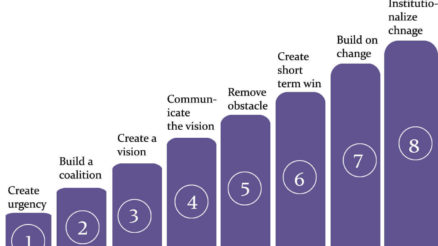Resistance to change does has effects on organizational change management. Resistance emerges in different and unexcepted forms. It can be individual or at organizational level; it may be organized or unorganized. It can be overt or covert.
Regardless of its type and extent, there are some negative effects of resistance to change and there may be some positive side of resistance to change.
It is the responsibility of every change manager and leader to identify the signs and symptoms of resistance and try to mitigate negative effects of resistance to change.
Let’s find out what are some of the common negative effects.
1. Reduced Performance
The obvious negative effect of resistance to change is on productivity of employees. Their performance drops when they’re not motivated about their work and not willing to embrace change. Subsequently, it adversely affects organizational performance.
This situation calls for a vigilant effort from leaders and change agents. Besides keeping an eye on performance and productivity of employees they should also focus on listening to genuine concerns of employees. What and how they are thinking about change ? What are gaps in communication of change ?. This sort of analysis and critical thinking will help to address the resistance to change and ultimately fix low productivity of employees.
2. Employees’ Turn over
Most often than not employees resist change because they view it as a threat to status quo. This feeling of uncertainty causes stress and employees are soon burn-out. And it is natural that when employees feel burn-out they start thinking of quitting their job.
It starts with receiving requests for job transfers from employees and later resignations. This may become very critical for any organization when its valued employees leave it. It is human resource who can make or break change initiative. Therefore, change leaders should be very careful about employees’ turn over during implementing change.
3. Conflicts
The best offense is a good defence. This holds true for resistance to change. Employees tend to be aggressive when they resist change. This causes conflict and disruptive conditions such as strikes at workplace.
Conflicts usually happen due to worsened relationship between management and employees. When change leaders forcefully throw change on their employee who in return respond in negative arguments and quarrels. There are conflicts within employees due to difference of opinion about change.
4. Delayed Execution of Change
The highest price of resistance to change is unnecessary delay on timeline of implementation of change. During the planning phase, change leaders usually don’t anticipate resistance and how it will affect change. But when they actually face it and try to manage it then it is the timeline which suffer most.
The best change management strategy always keeps cushion of time for managing resistance. Unrealistic timelines should be avoided and there should be flexibility in revisiting schedules and plans when organization is facing resistance from employees.
5. Additional Financial Cost
There is always a financial cost of resistance to change. Organizations suffer losses when its productivity is reduced due to resistance by unmotivated employees. Time and other resources are wasted when experienced employees leave organization and entire change initiative is delayed. Same is true for conflicts such as strikes which cost any organization heavy financial losses and reputation as well.
It is better to have financial analysis of resistance to change. This analysis will guide change leaders that how resistance is affecting financially and how this financial cost can be reduced. The effective and efficient resistance management is the answer to this problem.
Take Home Points
- Resistance to change does have negative effects on change initiative.
- Reduced productivity and low performance is the first negative impact of resistance to change.
- Employees’ turnover also negatively affects organizational change.
- Resistance to change also cause conflicts and quarrels within organization.
- Time lines and workplans are also adversely affected by resistance.
- Resistance to change does have financial cost.



